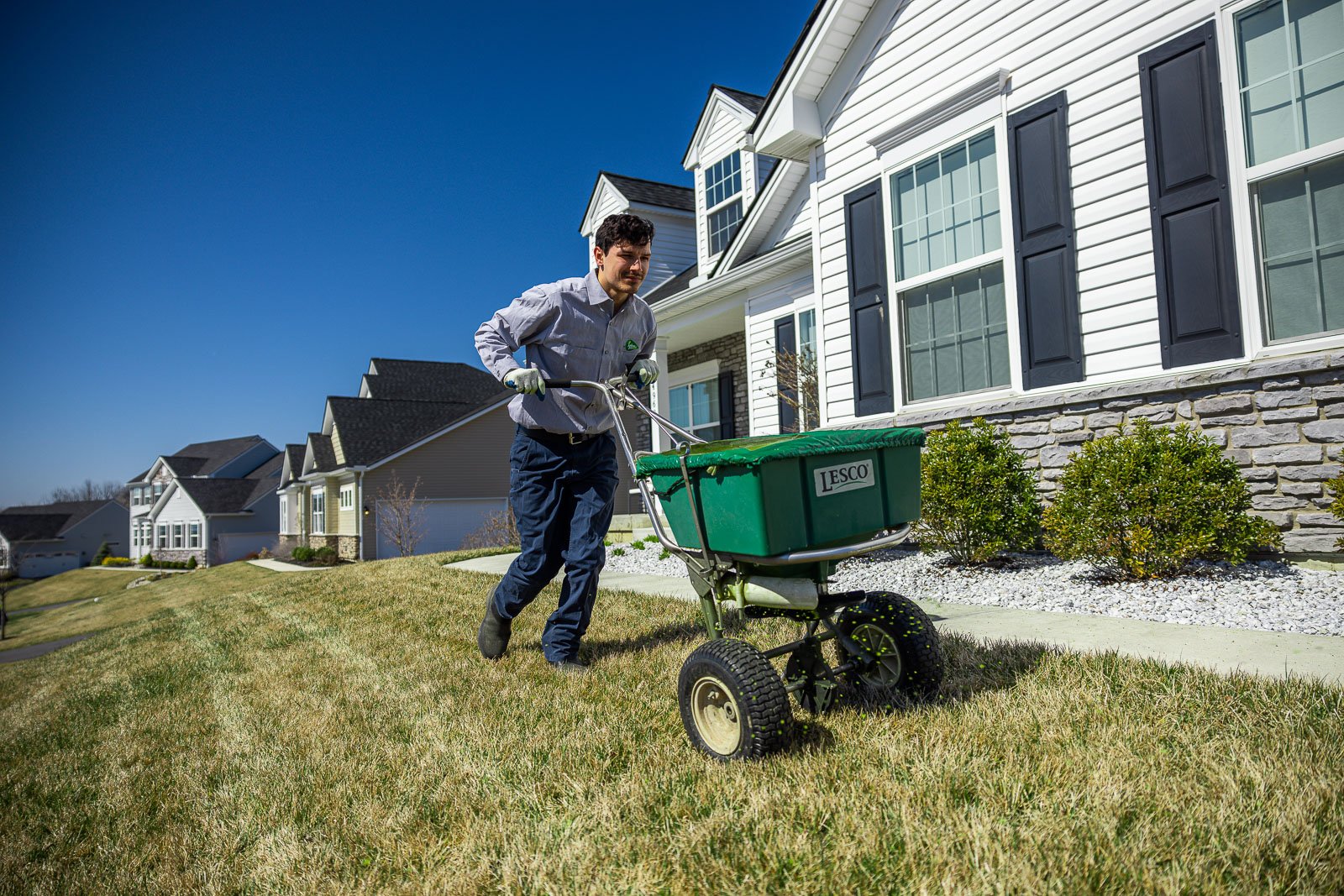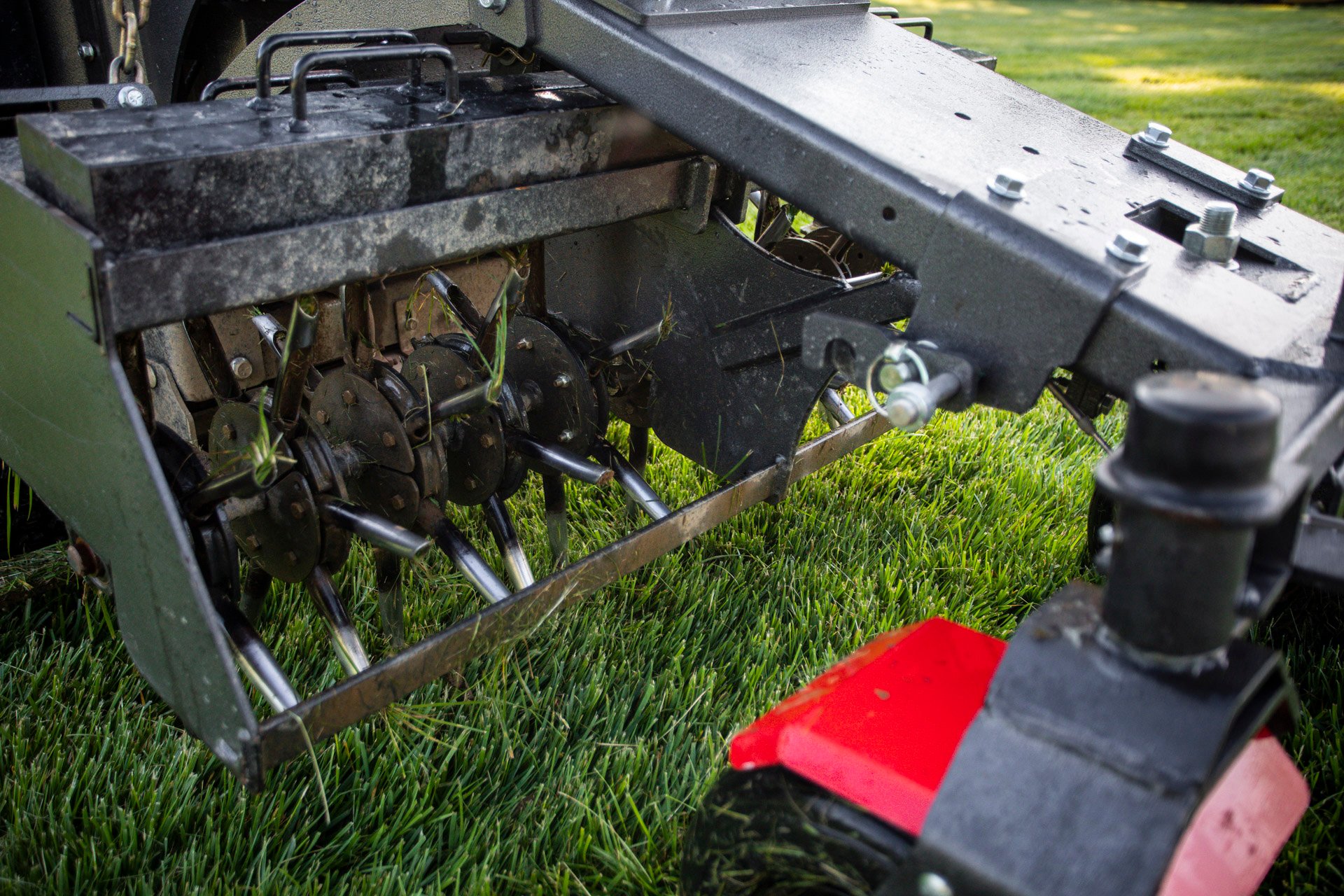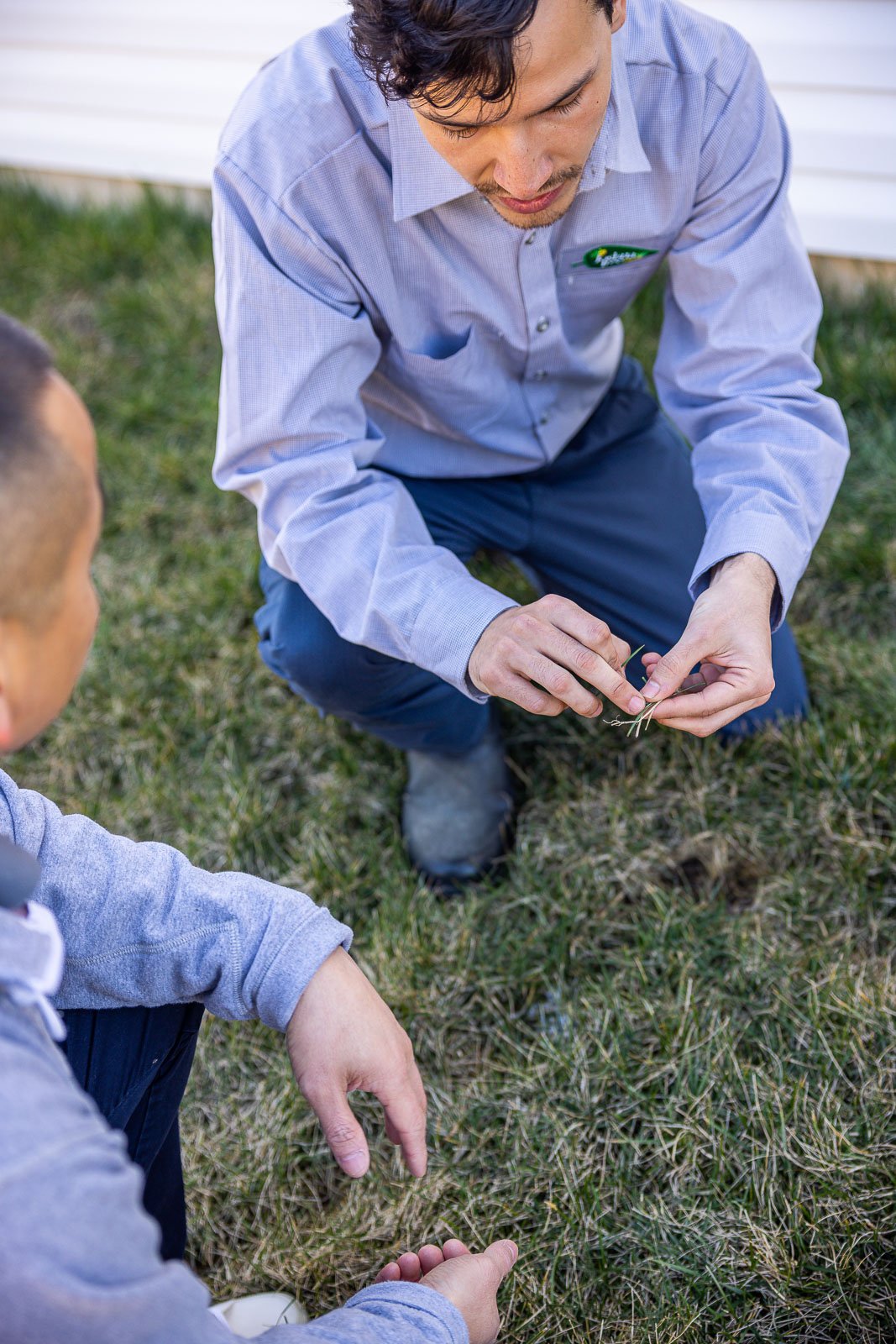Like other lawn diseases and problems, lawn rust fungus can be a huge source of frustration. It can really take away from the look and appeal of your lawn.
If you are finding orange dust on the grass, then you might very well be dealing with this pesky (but common) lawn disease.Fortunately, as far as lawn diseases go, this one is generally pretty easily managed. In this article, we’ll explain what you can expect if you’re dealing with this problem and also how you can prevent it.
What is Lawn Rust Fungus?
This disease is caused by the fungus puccinia spp. that thrives in warm, humid weather. It tends to grow in shady areas of the lawn.
It appears as an orange, powdery substance and it can spread easily. In fact, if you (or your pets) walk through the lawn, you can track it around. It’s not only frustrating to get this orange dust on your shoes, but you’re also spreading the disease when you do this.
Fortunately, there are effective solutions. We’ll walk you through how to get rid of lawn rust as well as what to do to prevent it in the future.
How to Get Rid of Lawn Rust
If you are dealing with lawn rust fungus there are a few things that you can do to help get rid of it. Generally, lawn rust does not cause lasting damage and it often resolves itself in most cases.
But taking these steps to get rid of lawn rust will also help.
#1: Make Sure Your Lawn Care Professional is Fertilizing Properly
With an application of high-nitrogen fertilizer, your grass will be stimulated to grow. Often, the grass is just tinged with rust. But as you stimulate new growth, it will start to grow out of trouble.
If your lawn is dry, some proper watering can also stimulate healthy growth.
#2: Mow the Lawn Regularly (and Properly)
Proper mowing is a huge part of lawn care. We have talked in previous articles about how important it is not to mow your lawn too short…and also to mow regularly!
While people sometimes put off mowing, it’s best to mow every week (sometimes two times a week if needed). The goal should be to cut no more than one-third of the grass each time that you mow.
When you mow a lawn with lawn rust fungus you are removing the rust-infected leaves. It’s important to then remove those grass clippings rather than leaving them lying on the lawn so that you can prevent the disease from being further spread around.
#3: Try to Avoid Tracking Lawn Rust Fungus on Your Shoes
If you’ve walked through the fungus, remove your shoes and clean them off. This is one way that it can be spread around.
Of course, this is a tough one to avoid as animals can also spread the lawn fungus…as can the wind! But if possible, try to avoid contributing to that problem.
You’ll also want to talk to a lawn care professional about any other recommendations that they might have.

Generally, rust fungus on grass is short-lived and will start to clear up with some good cultural practices and habits. But in severe cases, there are fungicides that can be used to stop further spreading.
With fungicides, it’s important to note that they will not cure a fungus, they’ll just stop it from spreading further. With rust fungus, they’re not commonly needed.
How to Prevent Rust Fungus on Grass in the Future
If you’ve dealt with rust fungus and restored your lawn to good health, you might be wondering how to prevent it from coming back.
Here are a few tips to keep in mind to prevent this problem.
#4: Use Good Watering Habits
Watering is one of the cultural practices that have a huge effect on the lawn’s health. It’s important that you water the proper amount as overwatering or under-watering can have detrimental effects.
#5: Make Sure Your Lawn Drains Well
It’s also important that your lawn is well-aerated so that it does not become compacted. Lawns that don’t drain well can start to deal with rust fungus (or other fungi problems) as they thrive in moist soil.

Lawn aeration is one of the best things that you can do for a healthy lawn.
#6: Reduce Shady Spots
Since lawn rust fungus thrives in shaded areas, you can reduce shade by keeping trees well-trimmed.
In general, growing healthy grass can be a challenge in the shade, so this will help with an overall healthier lawn.
#7: Implement Other Lawn Care Practices to Grow a Healthy, Thick Lawn
One of the best ways to simply prevent lawn rust from growing is simply to have a thick, healthy lawn. Like other lawn diseases, it’s more likely to attack when the lawn is thin and possibly already struggling.

You can start to choke out lawn diseases and other problems when your grass is thick and thriving.
Partnering with Professional Lawn Care Services
Although ALL lawns are subject to lawn disease, you can still take steps to grow a healthier and stronger lawn that becomes increasingly disease resistant over time.
The best way to do this is to partner with a lawn care pro that uses a comprehensive program to help you grow a thick and healthy turf.
When you work with a lawn care pro, you’ll also know that they’re keeping a watchful eye on your lawn. That means that at the first signs of trouble, they can provide advice on what to do.
Here at Joshua Tree Experts, we want you to know that we’ve got your back. We’ll keep a close eye on your lawn and help you make the best possible decisions to help keep it in good health.
With the right care for your lawn, you’ll gain valuable peace of mind. If you’re interested in having your lawn inspected and its health assured, contact us for a free quote or give us a call at 833-JTE-TREE.
Image Source | Lawn Rust (Wikimedia)




